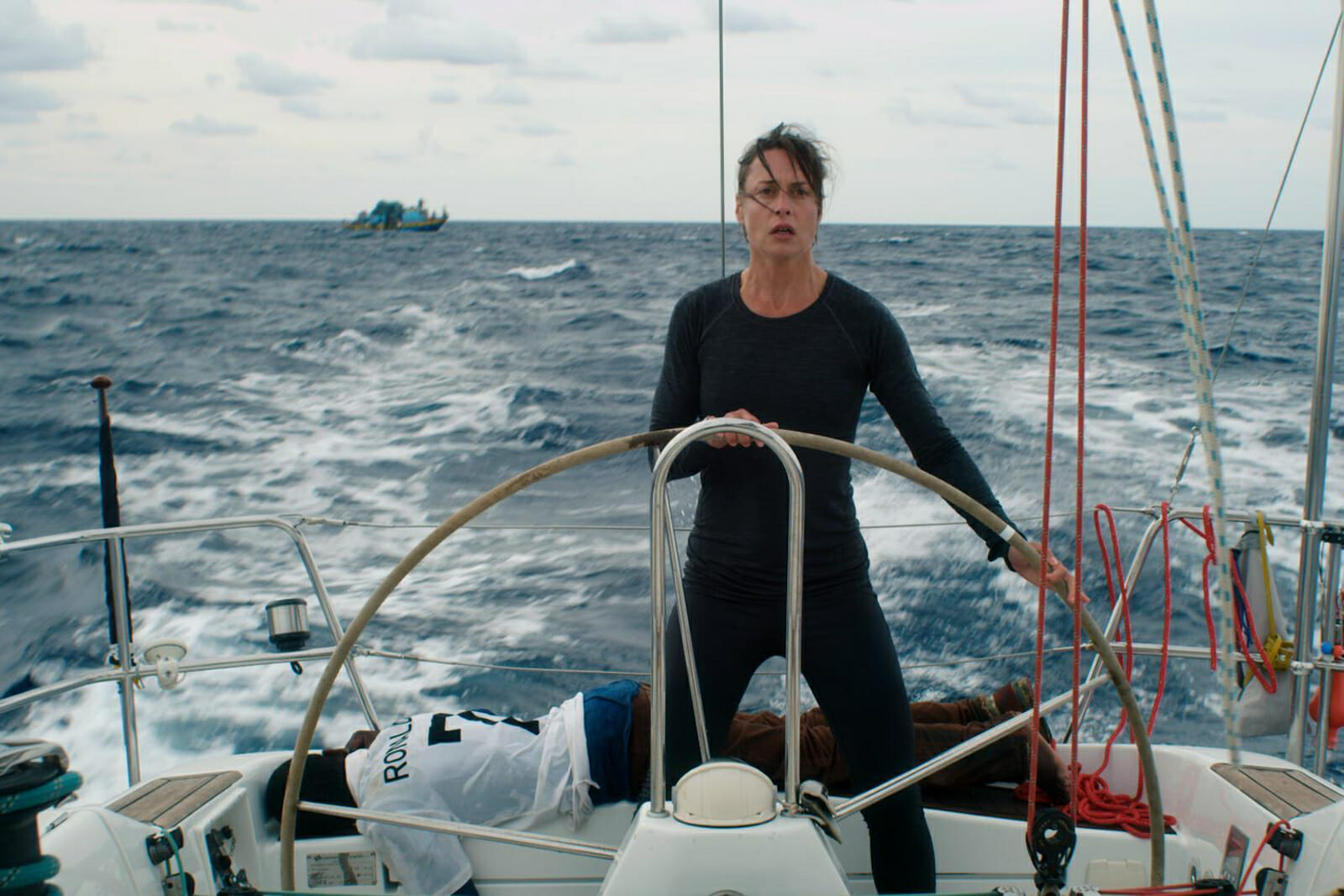
‘Styx’ Review
In Greek mythology, the River Styx separates the living from the dead. In Wolfgang Fischer’s Styx, another body of water serves a similar purpose. Susanne Wolff stars as Rike, a paramedic who decides to embark on a relaxing solo cruise from Gibraltar to Ascension Island (roughly at the midpoint between Brazil and Angola) on her sailing yacht. As anyone who’s watched the trailer knows, Rike’s expedition hits a metaphorical rough patch: she runs across a stranded fishing boat literally overflowing with dozens of desperate refugees. In the deserted expanse of the Atlantic Ocean, she must choose between waiting for help and trying to take action herself, with her one-person rations and 12-meter boat…truly a lose-lose scenario.
Styx is about the paradoxical relationship between man and nature, which is often a reflection of humanity’s own self-conflict. Rike is a paramedic who flees civilization to escape the daily suffering she witnesses on the job…the classic story of the Westerner seeking serenity in nature. To Rike’s dismay, she only encounters greater suffering out on the open sea. Likewise, African refugees look to the Atlantic Ocean as a temporary sanctuary on their quest for a better life. Too often, it is quite the opposite. In the era of Mass Migration, the industrialized world can no longer ignore the suffering that it has caused through colonialism and pollution, as it is increasingly washing up on their shores (and across the US-Mexico border).
It is ironic that the affluent white woman in the story is fleeing Europe for a tiny island in Africa. Ascension Island is itself a story of nature and migration: Charles Darwin imported many new species to this remote island as part of a personal terraforming experiment. The Barbary macaques at the beginning of the film also represent nature overcoming man’s artificial borders. They descend from the hills to the city, hopping fences and other forms of society’s borders in search of succor.
The film also highlights the grim humanitarian crisis on the Atlantic Ocean that happens in real life. In 2017, over 3,100 North African migrants drowned en route to Southern Europe. The problem has gotten worse in recent years. European leaders, like the far-right prime minister of Italy, have refused to let rescued refugees set shore in Europe. There are also draconian restrictions (highlighted in the film) for private vessels that encounter stranded refugee boats. As a result, the number of dead refugees is shooting up. Those who are “rescued” are, due to Europe’s refugee laws, frequently forced to turn back around to African countries like Libya, where they can be packed together like sardines in squalid camps and subject to torture. One of the characters (played by Gedion Oduor Wekesa) in Styx displays a literal scar from such torture.
Styx is a moving portrait of trauma in the modern world. Susanne Wolff does a great job of nonverbally demonstrating her character’s descent into despair. The refugees do an even better job. In Malta, Fischer found and cast actual survivors of the treacherous cross-Atlantic trek. The cinematography of the film is similarly authentic. The crew filmed on the open sea for 40 days, as opposed to relying on a studio and CGI. It really feels like you’re out on the Atlantic, riding waves and bearing thunderstorms. This film will give you a rare perspective on a humanitarian plight that few have lived to tell. As one of the refugees in the film pleads to an unresponsive Westerner, “Listen to me, please.”

